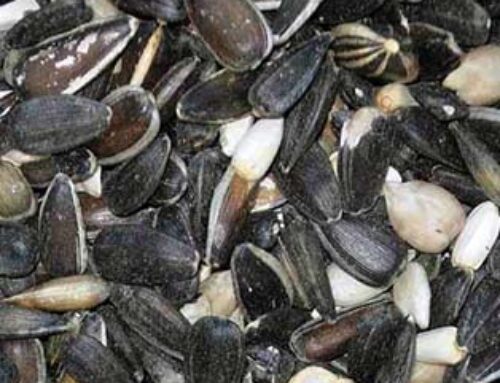It is the first day of spring and for those of us who live in the northern states, it is a day to celebrate, even as we realize we may very well see more snow fall in the next month. On this particular day however, the sun is shining and the temperatures are almost balmy and so we relish the sunshine and the knowledge that each day brings us closer to the return of the birds who have been missing for the past six months.
This morning we were surprised by a large flock of Common Redpolls that swept in and spread out on the ground
beneath the trees and bird feeders. They are small brown finches with a jaunty red cap and the males also have a reddish blush on their breasts. Not long after they arrived a slightly smaller group of Pine Siskins flew in. Both groups are ‘flighty’ species, meaning they are wary and easily spooked into flight. Our dog chose to bark not long after they landed and sent them scattering in all directions, but within a few minutes they were back pecking through the dead grass for bits of wild bird seed, as well as birch seeds that the wind has scattered about.
Normally, these two species are seen in the winter months, but this year they were absent when the snow was on the ground. It’s a mystery where they were spending the cold months, but we are happy to see them now. The Redpolls will only be in the area temporarily because their nesting grounds are much further north into Canada. Some Siskins will nest in the northern parts of our state, but most will also choose Canada as their destination.
As I mentioned, they arrived in a flock. This is a behavior that is found in many species of birds, ranging from the
very large species like Canada Geese and White Pelicans to the much smaller species like swallows and these finches. We can easily see flocks of geese as they line up in formation – generally a long and uneven V, J or even W. This type of streamlined formation may offer aerodynamic advantages in reducing the air resistance as they fly. In this way they save energy and are able to fly for greater distances.
Other and more common types of flocks are of a cluster shape. Think of Crows, Redwing Blackbirds or American Robins. These are 3 dimensional formations with birds stacked above and below one another, sometimes appearing to be a confusing swirl and other times appearing to twist and turn in synchrony.
While flocking may offer advantages to larger birds in their flight, for the smaller birds other factors may be the reason such as protection from predators. Many eyes can detect danger and offer greater vigilance for the whole. Flocks can also help in the search for food. This is particularly true when the species eats food that is found in abundance, such as waste grain found in fields. Or as in the case of the Redpolls, when food is concentrated in scattered patches.
We have had a lot of strong winds in the past few days and maybe that’s what blew the birds into our yard. Even though we know they are only temporary visitors, they are welcome reminders of the change of season. Like the honking of the geese as they wend their way northward for another season of life, the spirits of bird watchers are lifted too.
By Kate Crowley




